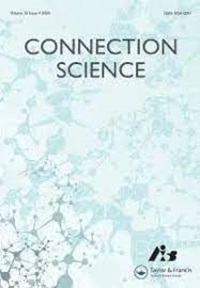CPW-DICE: a novel center and pixel-based weighting for damage segmentation
IF 3.4
4区 计算机科学
Q2 COMPUTER SCIENCE, ARTIFICIAL INTELLIGENCE
引用次数: 0
Abstract
Reliable evaluation of damage in vehicles is a primary concern in the insurance industry. Consequently, solutions enhanced with Artificial Intelligence (AI) have become the norm. During the assessment, precise damage segmentation plays a crucial role. Dent is a type of damage that can commonly occur in vehicles. It is difficult to pinpoint and tends to blend in with the background. This paper proposes a novel loss function to improve dent segmentation accuracy in vehicle insurance claims. Centre and Pixel-based Weighted DICE (CPW-DICE) is a loss function that performs pixel-based weighting. The CPW-DICE aims to concentrate on the centre of the dent damage to lessen faulty segmentations. CPW-DICE generates a weight mask during training by employing ground truth (GT) and prediction masks. Simultaneously, the weight mask is incorporated into DICE loss. Experiments conducted on our comprehensive internal dataset show a 3% improvement in Intersection over Union (IoU) score for three state-of-the-art (SOTA) approaches compared to DICE loss. Finally, CPW-DICE is evaluated in similar tasks to demonstrate its benefits beyond car damage segmentation.CPW-DICE:一种新的基于中心和像素的损伤分割加权方法
对车辆损坏的可靠评估是保险行业的首要问题。因此,人工智能(AI)增强的解决方案已成为常态。在评估过程中,精确的损伤分割是至关重要的。凹痕是一种通常发生在车辆上的损伤。它很难精确定位,而且往往与背景融为一体。为了提高汽车保险索赔中凹痕分割的准确性,提出了一种新的损失函数。中心和基于像素的加权DICE (CPW-DICE)是一个执行基于像素加权的损失函数。CPW-DICE的目的是集中在凹痕损伤的中心,以减少错误的分割。CPW-DICE在训练过程中利用ground truth (GT)和prediction mask生成权重mask。同时,权重掩模被纳入DICE损失。在我们全面的内部数据集上进行的实验表明,与DICE损失相比,三种最先进的(SOTA)方法在交汇(IoU)得分上提高了3%。最后,在类似的任务中对CPW-DICE进行评估,以证明其在汽车损伤分割之外的好处。
本文章由计算机程序翻译,如有差异,请以英文原文为准。
求助全文
约1分钟内获得全文
求助全文
来源期刊

Connection Science
工程技术-计算机:理论方法
CiteScore
6.50
自引率
39.60%
发文量
94
审稿时长
3 months
期刊介绍:
Connection Science is an interdisciplinary journal dedicated to exploring the convergence of the analytic and synthetic sciences, including neuroscience, computational modelling, artificial intelligence, machine learning, deep learning, Database, Big Data, quantum computing, Blockchain, Zero-Knowledge, Internet of Things, Cybersecurity, and parallel and distributed computing.
A strong focus is on the articles arising from connectionist, probabilistic, dynamical, or evolutionary approaches in aspects of Computer Science, applied applications, and systems-level computational subjects that seek to understand models in science and engineering.
 求助内容:
求助内容: 应助结果提醒方式:
应助结果提醒方式:


